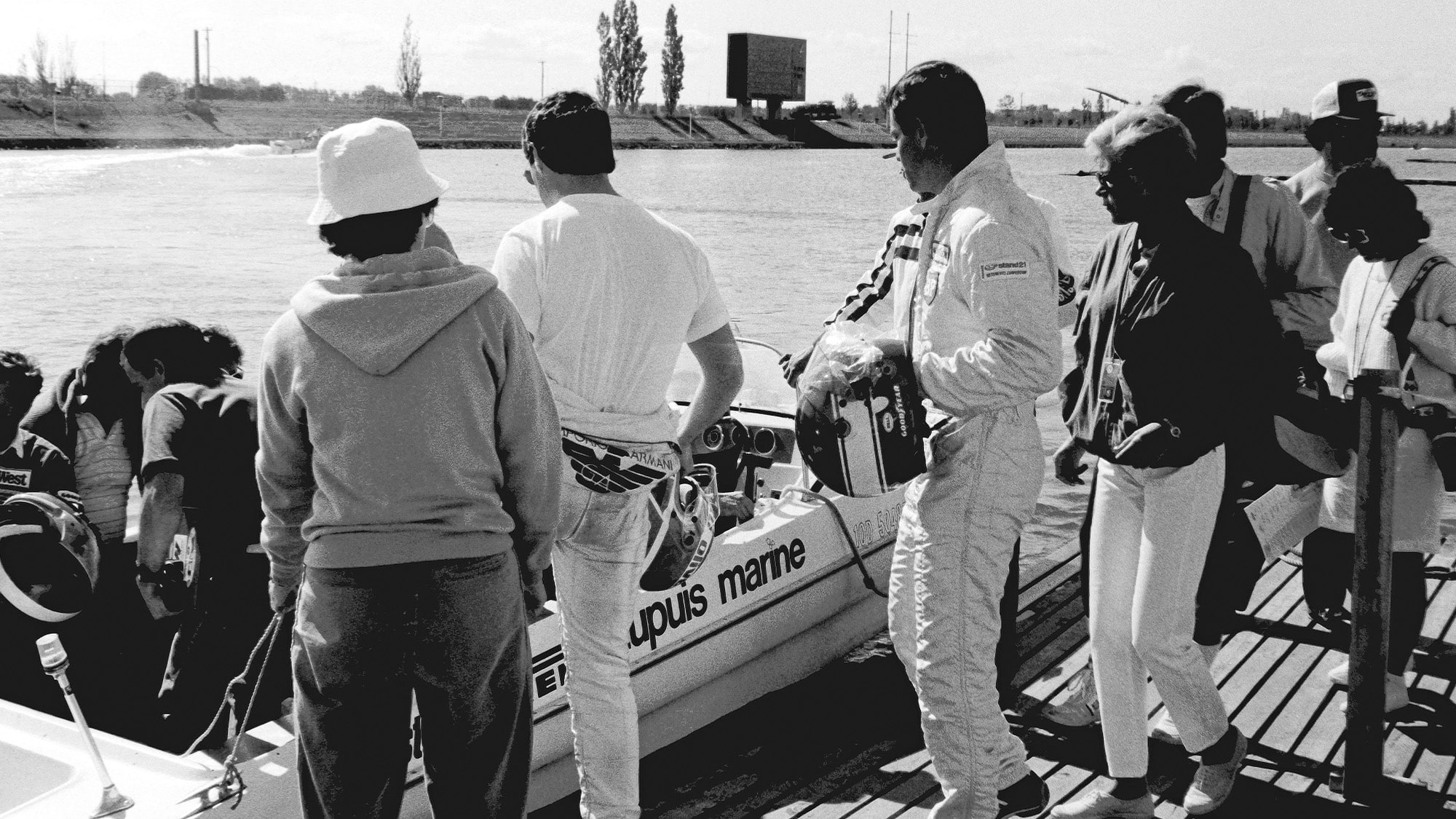Warwick & Tambay catch the boat to the 1986 Canadian GP: Flashback
For two decades Maurice Hamilton reported from the F1 paddock with a pen, notebook and simple Canon Sure Shot camera. This month’s snapshot captures drivers in transit at the 1986 Canadian GP

Maurice Hamilton
Derek Warwick, followed by Patrick Tambay, prepares for a boat ride on the Olympic lake at Montreal on 14 June 1986. This unique form of Formula 1 transport was made necessary by the pits and the paddock on Circuit Gilles Villeneuve being half a mile apart, the F1 teams having to make their weekend headquarters in and around boathouses at the end of the lake. It may have been picturesque, but it was hugely inconvenient. Each day, the teams had to move cars and kit back and forth from the open pits, then located at the opposite end of the track to the permanent structure in use today.
Rather than relax and enjoy the experience, both drivers had plenty to occupy their thoughts while preparing for post-qualifying debriefs. Warwick and Tambay may have been team-mates 12 months before but the time spent with Renault had done little for their careers.
The switch by Renault from entrant to engine supplier for 1986 had left Warwick without a drive. Canada marked his comeback under difficult circumstances, the Englishman receiving the call from Brabham to take the place of Elio de Angelis following the Italian’s fatal accident during a test at Paul Ricard.
Warwick had qualified on the fifth row alongside the other Brabham of Riccardo Patrese. It may have been a reasonable result thus far, but Warwick was already aware of the difficulties associated with the low-line BT55 and its lay-down four-cylinder BMW turbo. The team was experiencing the engine problems that would end Warwick’s race after 20 laps; a handicap exacerbated by Brabham having ‘only’ six engines for the weekend. That number would see them through an entire season today.
Tambay found himself at Haas-Lola in the second and final season for the American-funded operation. Engines were also the cause of unease in this team, Haas suffering from the appearance of a Ford V6 turbo which, when it arrived, proved hopelessly down on power. Tambay also had to cope earlier in the day with losing two nose cones due to failures in the carbon-fibre bonding. That would be a minor irritation compared to the suspected track rod failure that would dump the Frenchman into the wall during the warm-up on race morning and cause bruising and lacerations bad enough for an enforced stay in a Montreal hospital.
Tambay was team-mate to Alan Jones, the Australian having seen better days at this very track. Jones had clinched his 1980 world title by effectively easing Nelson Piquet into the wall just after the start and forcing his rival to take the spare Brabham, complete with a qualifying engine that was never going to last the distance.
Before the race had started, Jones had delivered a psychological blow. Rather than hitch a boat ride, Jones, with gloves, balaclava and helmet in place, had marched down the tow path, staring straight ahead, speaking to no-one, as if ready to take on anyone who got in his way. Neither carefully managed pit access routes, nor drivers, come close to offering the same potential for menace these days.
